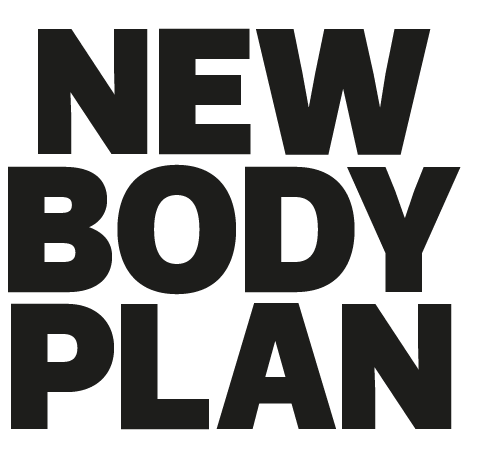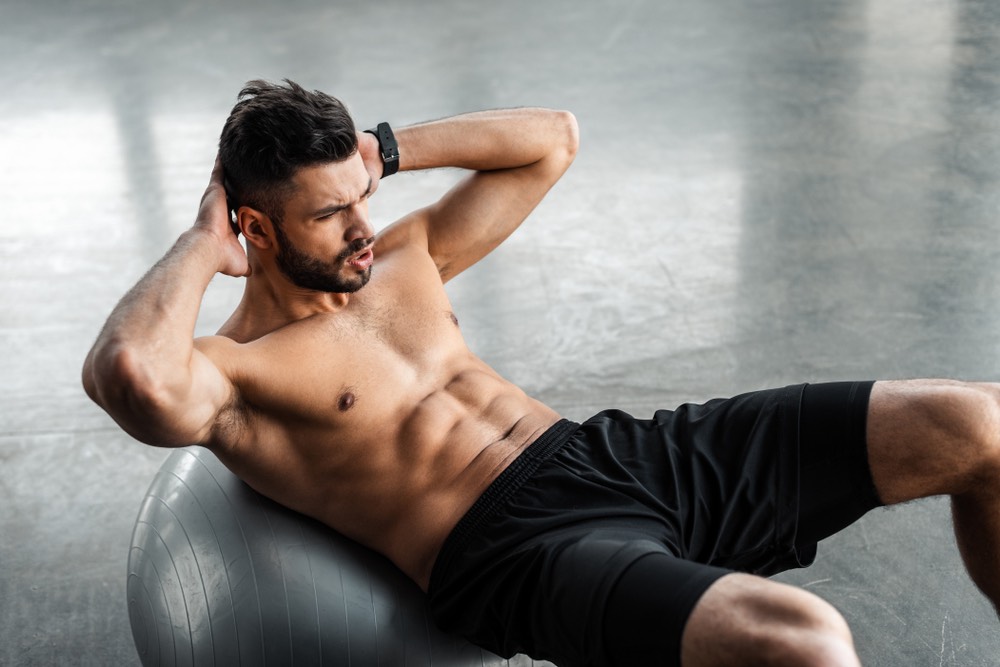Sculpt a lean, defined and athletic physique with the Swiss ball
From strengthening your core to sculpting your muscles, and from improving your balance and enhancing your co-ordination and stability, there’s few better bits of gym kit than the Swiss ball for helping you to hone a leaner, stronger and more defined body as well as become fitter, faster and more athletic in every walk of life, says New Body Plan’s Joe Warner
Simple, versatile, and surprisingly challenging, the Swiss ball is more than just a piece of equipment collecting dust in your local gym. Its potential to target numerous muscle groups – especially your abs – improve your balance and stability, and reinvigorate your workouts is unparalleled. So whether you’re a novice gym-goer or an experienced athlete, the Swiss ball can add a new layer of complexity, challenge and reward to your workouts to take you a big step closer towards the profound physique and performance improvements. Keep reading to discover the smart way to incorporate the Swiss ball to your workouts to get the results you want!
TL;DR The Swiss Ball is an exceptional fitness tool that promotes full-body strength, enhances core stability, and improves balance. Its versatility makes it an effective addition to any workout routine, whether your primary training goal is to lose fat, build muscle, increase strength or improve sporting or athletic performance.
Find your perfect fat-loss plan!
Take the New Body quiz!
What is a Swiss ball?
A Swiss ball, also known as a stability ball or exercise ball, is an inflated rubber ball used in fitness and rehabilitation exercises. Originally used by physical therapists and chiropractors for rehabilitation purposes, the Swiss ball has found its place in gyms and homes due to its versatility and effectiveness in engaging various muscle groups and enhancing balance and stability. It offers a dynamic workout challenge, as it adds an element of instability to exercises, forcing your body to work harder to maintain balance.
What muscles does the Swiss ball work?
Using a Swiss ball in your workouts can engage nearly every muscle in your body, depending on the exercise performed. Notably, it’s renowned for its ability to activate the core muscles: the abs and obliques, and lower back. But it’s not limited to core work. Exercises like Swiss ball hamstring curls target your lower body, while Swiss ball push-ups work your upper body, particularly the chest, shoulders, and triceps. Moreover, the constant need to stabilise the ball stimulates the smaller, often-neglected stabilising muscles throughout the body.
Why is the Swiss ball so good?
One major advantage is its ability to improve core strength and stability, which is paramount in both athletic performance and everyday life. A study in the Journal of Strength and Conditioning Research found that performing exercises on a Swiss ball significantly improved core muscle activation. Additionally, it encourages proper posture and can help alleviate back pain. The Swiss Ball also adds variety and fun to your workout, breaking the monotony of regular gym routines.
The best Swiss ball exercises
Incorporate some of these tried-and-tested exercises to your workout to challenge your muscles in new ways to force them to grow bigger, stronger and more defined!
- Swiss Ball Plank: Targets the core.
- Swiss Ball Push-ups: Targets the chest, shoulders, triceps, and core.
- Swiss Ball Hamstring Curl: Targets the hamstrings and glutes.
- Hip Lift: Targets the glutes and lower back.
- Swiss Ball Sit-up: Targets the abs.
- Back Extension: Targets the lower back and glutes.
- Pike: Targets the core, shoulders, and quads.
- Swiss Ball Wall Squat: Targets the quads, hamstrings, and glutes.
- Swiss Ball Jackknife: Targets the abs and hip flexors.
- Seated Balance: Targets the core and improves overall balance.
- Swiss Ball Chest Press: Targets the chest, shoulders, and triceps.
- Prone Cobra: Targets the back, shoulders, and glutes.
- Swiss Ball Russian Twist: Targets the abs, especially the obliques.
- Swiss Ball Knee Tucks: Targets the abs, hip flexors, and shoulders.
- Glute Bridge: Targets the hamstrings, glutes, and lower back.
How do I use the Swiss ball?
Performing exercises on a gym ball might seem tricky at first due to the instability, but it’s quite straightforward once you get the hang of it. Let’s take the gym ball plank as an example. You start by placing your forearms on the ball, extending your legs behind you. You then engage your core, keeping your body in a straight line from your head to your heels, just as you would in a regular plank. The trick here is to keep the ball steady: that’s where the challenge lies.
When should I use a gym ball?
Where the gym ball fits into your workout depends largely on your goals and the specific exercise you’re performing. If you’re using it for core work or stability training, it’s best done at the beginning of your session when you’re still fresh. However, if you’re using it as an accessory to compound exercises to target specific muscles, it’s better placed towards the middle or end of your workout.
How to use the chest press machine to build a bigger and stronger chest
What equipment do I need?
The only equipment required is, of course, the ball itself. It’s available in various sizes to accommodate different heights and exercise preferences. The general rule is that when you sit on the ball, your hips and knees should be at a 90-degree angle. Some exercises may require additional equipment like dumbbells or resistance bands, but there are plenty of effective exercises using just your bodyweight.
What other moves are similar to Swiss ball exercises?
Other exercises that require stability and engage the core in a similar way include yoga and Pilates moves. Tools like the BOSU ball, TRX suspension trainer, or even a simple yoga mat for floor-based exercises can offer similar benefits in terms of core engagement and stability training.
Is the Swiss ball suitable for beginners?
Absolutely. It’s suitable for all fitness levels. Beginners can start with basic exercises like the sit-up or hip lift. As you become more comfortable and your balance improves, you can progress to more challenging exercises. Just remember, the goal is control and stability, not speed or reps.
What else do I need to know?
One important factor to keep in mind is safety. Make sure your ball is anti-burst, meaning it will slowly deflate if punctured rather than burst. Always inspect your ball for any damage before use. Also, wearing the right workout gear, particularly shoes, can enhance your grip and stability.
How to use a Swiss ball
- Choose the right size ball.
- Maintain proper form, focusing on control and stability.
- Start with basic exercises, progressing as your balance improves.
- Check your ball for any damage before each use.
How many reps should I do?
The number of reps will depend on the exercise and your fitness level. A good starting point for most exercises is 10 to 15 reps.
How many sets should I do?
Again, this varies depending on the exercise and your fitness level. However, two to three sets of each exercise is a good general guideline.
How much weight should I lift?
Many Swiss ball exercises are bodyweight exercises. For those that do involve weight, such as the chest press, start with a weight you can lift for 10 to 15 reps with good form. You can then adjust as necessary based on your strength and endurance.
Find your perfect fat-loss plan!
Take the New Body quiz!
Burn fat and lose your belly with the best cardio for weight loss
Burn fat and lose your belly with the best cardio for weight loss

